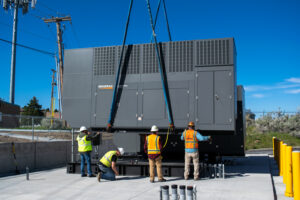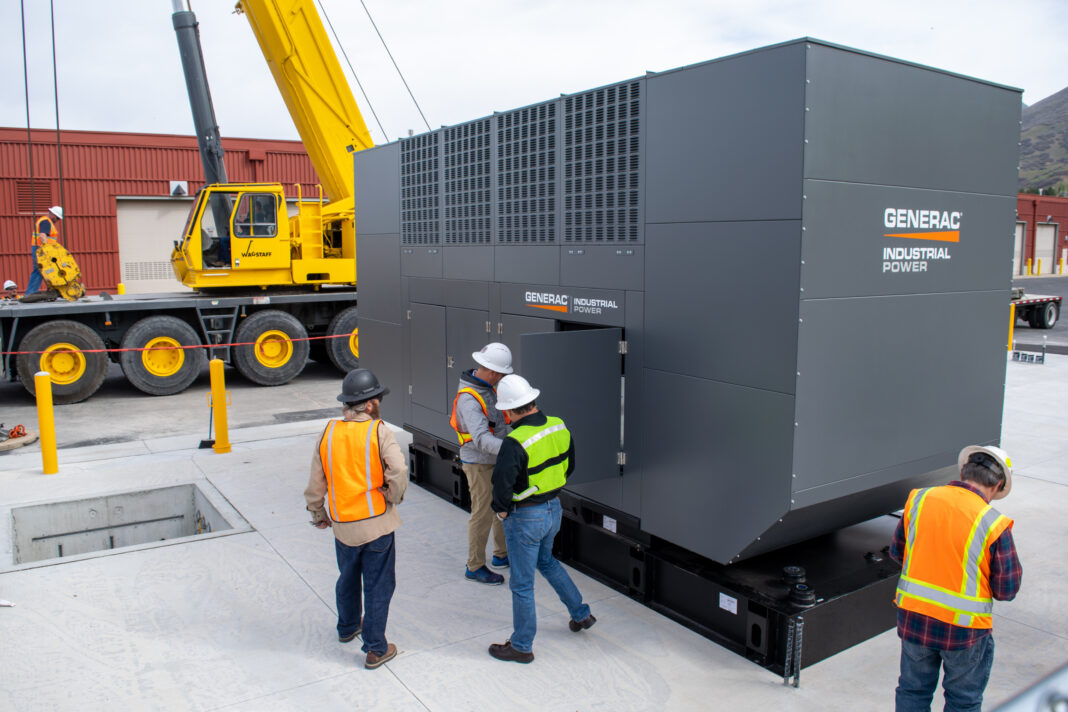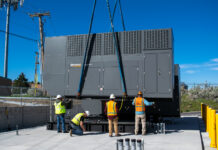What factors should you consider when sizing a generator?
If you are not familiar with the information needed to properly size a generator for your facility’s power needs, then you are not alone. Figuring out how to properly size a generator for the facility’s needs is a conundrum that even qualified engineers are all too familiar with. Limitations with sizing programs, load uncertainty, leading power factor, motor starting transients, harmonics, IGBT rectification, soft starters, VFDs, and UPS sizing can all play a role in the stress created trying to size your own generator.
Sizing Program Limitations
Most sizing programs have not evolved with the generator technology of today. Programs can analyze a few discrete loads and analyze a transient load with a given pre-load (like a motor start) fairly well. Most programs cannot accurately size a building because they don’t support multiple load diversity factors, or sometimes entering too many loads in a single step creates a “false” condition. They also cannot model and analyze non-linear loads accurately. Non-linear loads need harmonic analysis, and simple “rule of thumb” multipliers supplied by most programs are not adequate.
These programs have a hard time accurately sizing soft starters and UPS’s. Most programs treat all soft starters exactly the same, regardless of technology. Also, UPS technology can vary significantly depending on generator size. These details are not usually accounted for in basic sizing programs.
Load Uncertainty
New Construction
It is hard to gauge what types of loads will be connected, what the anticipated load level is, and what circuits are going to be connected. Depending on change orders during construction, you could end up needing a completely different size of the generator than initially thought. This can lead to under sizing of the generator and possibly having to restructure what loads are essential and what loads are optional in the event of an emergency.
Load Growth
Do you have an aggressive growth plan? How certain is your business model? Would you benefit from an expandable solution? Is paralleling a viable option for your business? These are all questions that come up during generator sizing talks. Paralleling is usually the best option for load growth over time. This allows your business to preserve capital at the beginning and invest in more capacity over time.
Existing Facilities
Existing facilities looking to install a new generator need to know their power demand inside and out before committing to a certain size of the generator. This can be found by analyzing billing history or using a power analyzer. Existing facilities should utilize all historical measurement data to decide what size of generator would be good for their specific application.
Leading Power Factor
Leading power factor can cause generator voltage issues. All 3-phase generators are rated for .8 power factor. You can only reach full load current with these generators if you are at .8 power factor or less. However, you cannot get full load amps or kW at a power factor of less than .8. Having a leading power factor can cause self-excitation resulting in voltage instability and over-voltage shutdowns. This needs to be accounted for when choosing a generator.
Motor Starting Transients
Motor starting causes frequency dips. This can cause an issue with some loads. UPS’s are most sensitive to frequency dips. You do not want more than a 15% voltage dip. Some salesman will tell you a 35% dip is ok, because it only lasts for a fraction of a second, but it can still cause issues. Some generators will only recover up to 90% if this happens too often. Be sure to size your generator to handle motor starting transients. You don’t want to be in an emergency situation and have the capability to run your equipment, but not be able to start it. Oversizing the alternator on your motor can mitigate some of these issues.
Harmonics
Non-linear loads caused by computers, UPSs, VFDs, battery chargers, or AC converting to DC can all affect generator sizing. They can cause harmonic voltage distortion which causes harmonic currents to flow through the alternator’s source impedance. Sizing can be complicated by the alternator size and voltage and by the characteristics of your facilities nonlinear loads. A harmonic analysis done by an engineer is better than following any “rules of thumb” you may come across in regular sizing programs.
IGBT Rectifiers
A new type of rectifier is appearing in drives and UPS’s. Insulated Gate Bipolar Transistor technology has come up as a new type of active power factor correction. IGBT rectifiers can cause noise problems when they are the only load on the generator. Connecting other loads seems to solve this problem. Be sure to take this into consideration when sizing a new generator.
Soft Starters
Soft starters are an electronic, reduced voltage motor starter. They will produce harmonics during their starting phase only. Distortion levels are impacted by the current limit setting. Sequence starting can help mitigate the effects of harmonics. To avoid voltage and frequency dips, always enable voltage ramping, this will create a soft loading of the generator and limit transients.
VFDs & Regeneration
VFDs are seen as a rectifier by the generator. Voltage and frequency transients are not the issue with VFDs, the issue is harmonics. Size for VFDs as if they were a non-linear load and limit system voltage dips to 15% or lower. Regeneration becomes a topic of discussion when cable elevators and cranes are involved. When the load is going down, the drive becomes a break. Power must then be dissipated by a breaking resistor, putting other loads on the generator, a unit mounted load bank, or not relying on the generator as a break.
UPS Sizing
The issues that come with UPS’s depend on which type of UPS we are talking about. Passive standby (formerly off-line) UPS’s create harmonics. This means that size is used to control voltage distortion and loads should be stepped onto a generator if they are large enough to cause a problem.
Line-Interactive UPS’s are sensitive to frequency variations, produce extensive harmonics, and load steps from the UPS itself are often the main issue. With both passive standby and line-interactive UPS’s the generator kW rating should be the UPS x 5.
Double conversion UPS’s are the market norm for critical applications and higher power ratings. These need no load stepping. You should size the alternator based on harmonic content, consider battery recharge, and consider HVAC requirements. Assuming the HVAC is on the generator you should size your generator kW rating as UPS x 2 to 2.5.
For more information on how to correctly size generators, watch our Generator Sizing Webinar
Got More Generator Questions? We Can Help!
Call 800-595-5315 Or Connect With Our Expert Technicians Here:
Other Articles
- Critical Spare Planning


- Where Do I Start On My Generator Installation?


- How can Las Vegas heat lead to generator failures?





Lead Generator Technician
Graduated from Idaho State University with a degree in Heavy Duty Diesel and Onsite Power Generation. Damien is a master tinkerer and has been working on anything with a motor since he was about six years old. Besides being a generator fanatic, Damien is also an avid snowmobiler and aspiring world traveler.




